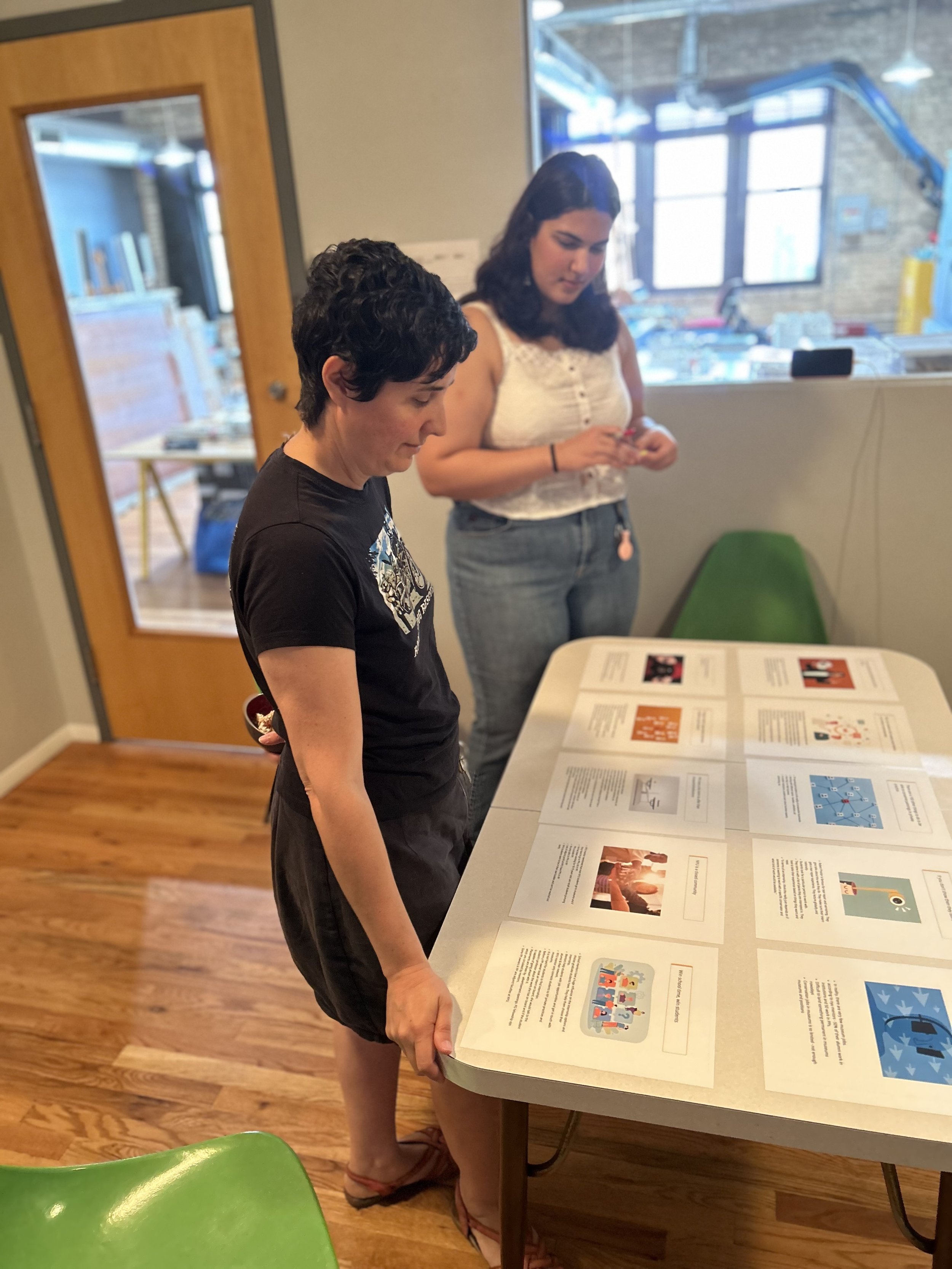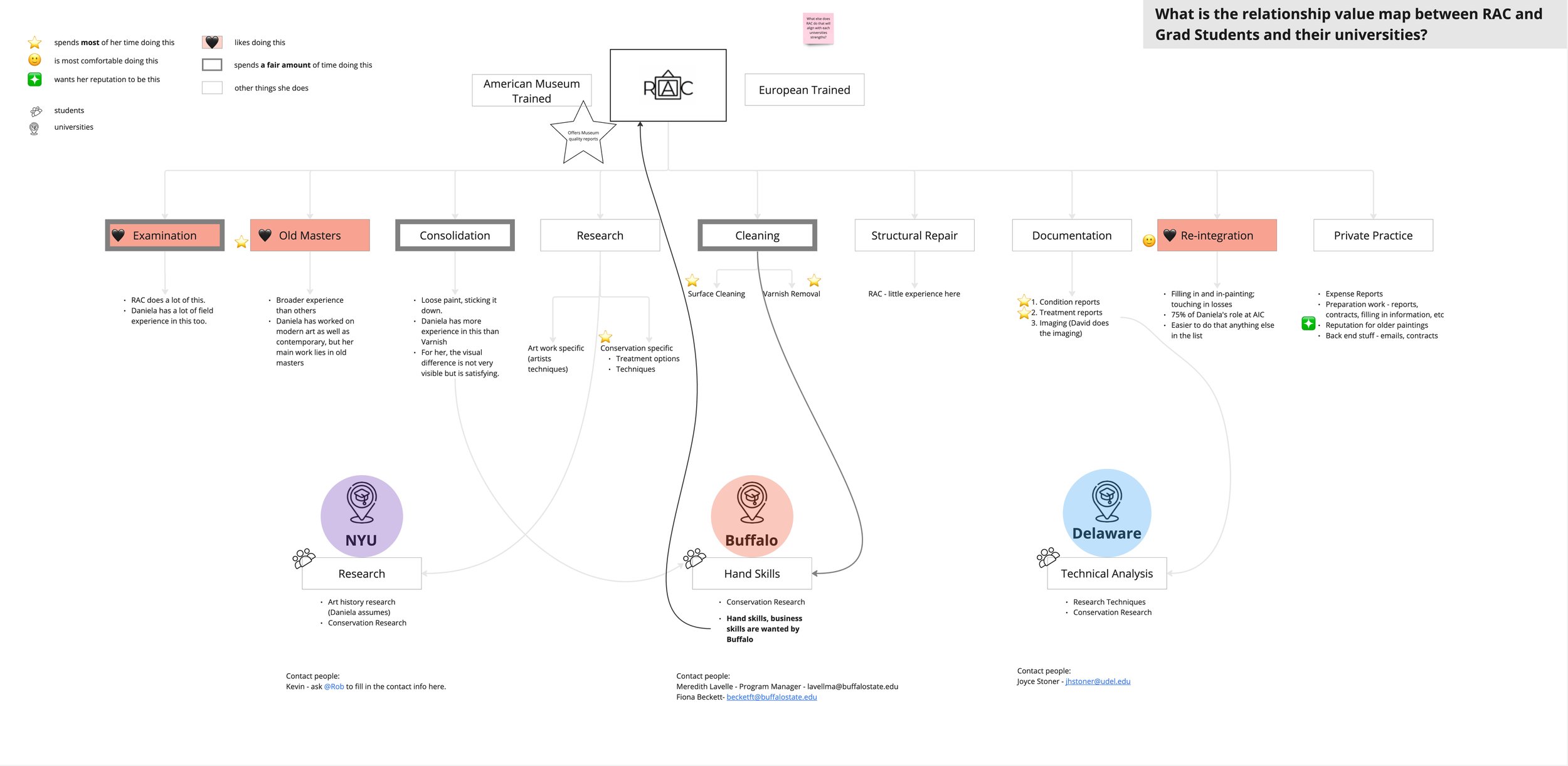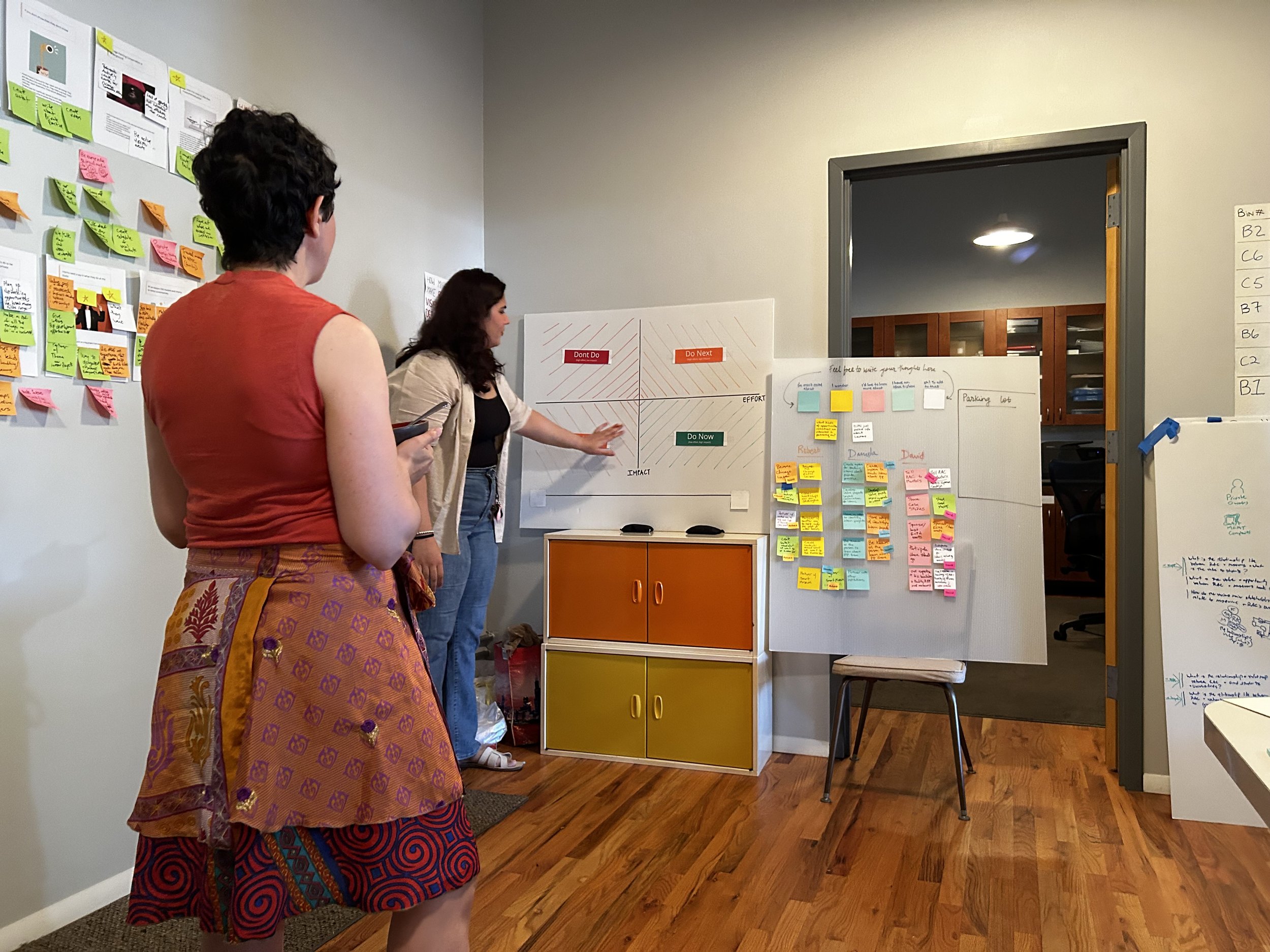Transforming Reanda Art Conservation’s Internal Innovation Process
project scope
Role
Business and Service Designer
Year
2023
Team
Myself (researcher/designer)
RAC’s Leadership Team (5 members)
Scope & Timeline
3–4 months of research and prototyping. Fulltime.
Methods
Semi-structured interviews
Surveys
Ecosystem mapping
Co-creation & strategic visioning workshops
Prototyping
Tools
Figma, Miro, Google Meet, Zoom
Reanda Art Conservation
is a women-owned business in Chicago specializing in old master paintings. They struggled to attract interns in a highly competitive art conservation field. Most graduate students favored internships at prestigious museums, making it difficult for smaller, private conservation businesses like RAC to secure emerging talent.
what was missing?
Visibility among graduate programs and advisors.
A clearly communicated value proposition for student interns.
A long-term hiring and growth strategy aligned with industry needs.
Clarity on RAC’s ecosystem of partnerships, influence, and positioning
what decisions were needed?
How to position RAC as a desirable internship destination
What initiatives could attract talent without expanding the company’s size
How to leverage existing partnerships and form new ones
How to ensure long-term organizational growth through strategic insights
RESEARCH QUESTION
How might we make Reanda Art Conservation visible and desirable to graduate students?
approach
Participants Recruited
15 stakeholder interviews (graduate students, mentors, business owners)
75 survey responses (30 students, 45 businesses)
Tradeoffs & Challenges
Niche Industry = Small participant pool, extremely rich insights
Long Change Timelines = Recommendations took 8 months - 1 year to fully implement
Balancing internal constraints with external visibility goals
methodology and process
Competitive Analysis
Generative Research
Survey Design
Ideation and Data Synthesis
Semi-structured interviews
Surveys
Ecosystem mapping
Co-creation & strategic visioning workshops
Prototyping
Ideation
survey reports + analysis
semi-structured interviews
workshops
key insights & actions
1.
Mentorship dynamics strongly influence student internship decisions.
Mentors defaulted to recommending museums due to prestige and familiarity.
Developed tailored communication strategies and talking points for mentors; highlighted RAC’s differentiators like business training, client interactions, and hands-on work.
2.
Students sought real-world skills not offered in academia.
Surveys revealed students felt unprepared for business aspects of conservation work.
Designed a new learning track featuring RAC-led workshops on business and client management—key differentiators from museum internships.
3.
RAC’s position in the conservation ecosystem was unclear.
Internal teams lacked visibility into potential allies, competitors, and collaborators.
Created a system and value map of RAC’s ecosystem including grad schools, museums, clients, and businesses. Helped RAC identify strategic partnerships and network better.
4.
Hiring was reactive, not strategic.
No clear structure and projects for what interns would do, or how to attract them.
Helped RAC define intern roles aligned with strategic goals. Improved hiring appeal and planning; interest from students for summer 2024 internships increased.
deliverables & prototypes
impact
Increased student awareness and interest in RAC internships for 2024
Strengthened relationships with graduate mentors and programs
Expanded partnerships with conservation professionals and clients through word-of-mouth
Gave RAC clarity on its growth path and a strategic lens on hiring
Contributed to the American Institute of Conservation, increasing industry credibility and visibility
reflections
This project taught me valuable lessons. I learned to embrace the uncertainty of entering a new industry and recognize that humility and curiosity are essential when collaborating with experts.
Engaging in co-design workshops with RAC's team not only yielded stronger strategies but also fostered trust and morale within the company.
Through this experience, I discovered the power of teamwork in driving innovation and positive change.

Workshop at RAC with the founder

Research Synthesis

Workshop at RAC with the founder

Insight generation from synthesis

CoDesign Workshop at RAC with the founder, operations lead and another conservator

Worksheet generation for future RAC workshops with students and other conservators - Value Proposition

Co-Design workshop for insight generation

Ecosystem map of RAC and other stakeholders

Co-Design Workshop at RAC with the founder, operations lead, another conservator and conservation intern.

RAC's value map with respect to other universities

Prototyping a workshop for RAC in their office space

Research clustering and insight generation

Insights to Opportunities Workshop with the founder

Leading an impact to effort workshop with RAC staff















